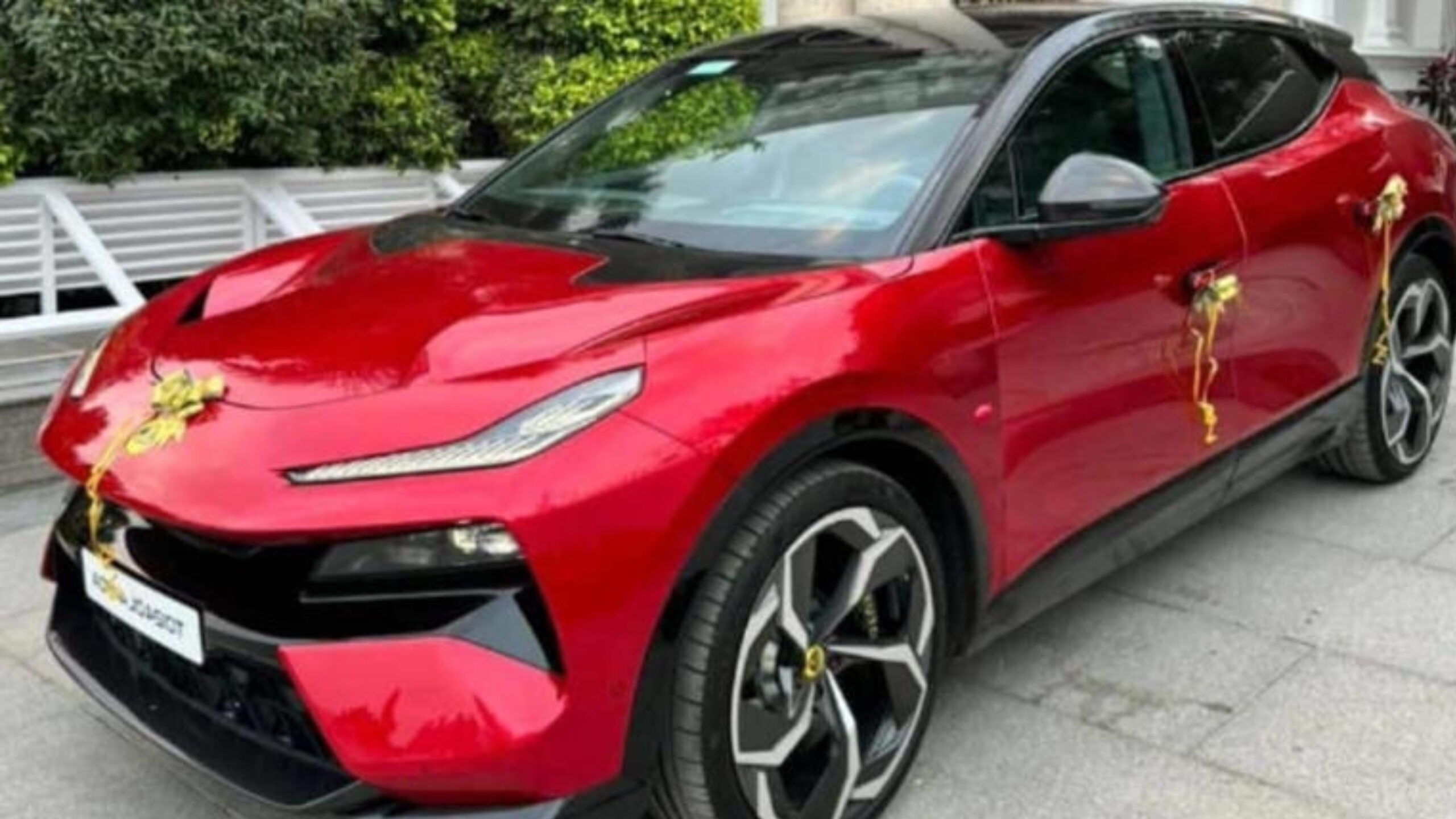India’s automotive landscape is undergoing a significant transformation with the rise of electric vehicles (EVs). Luxury car manufacturers are not lagging behind in this trend, evident in the launch of the Lotus Eletre SUV by a renowned British luxury carmaker. Introduced to the Indian market in November 2023, this electric marvel starts at a princely sum of Rs 2.55 crore. The recent delivery of the first Lotus Eletre EV SUV in India to a Hyderabad-based woman, Harshika Rao, marks a noteworthy moment in the country’s electric mobility journey.
Car Crazy India, a prominent automotive platform, celebrated the occasion by sharing an image on Instagram. The Lotus Eletre R, adorned in Natron Red, boasts a formidable 905bhp, propelling it from 0 to 100 km/h in a mere 2.7 seconds. The caption reads, “Presenting India’s first Lotus Eletre R. Congratulations to @harshikarao on your new ride and kudos to @adsrulz and @krishna_vungarala for delivering the first new Lotus in India.”
The Indian lineup of Lotus Eletre includes three variants: Eletre, Eletre S, and Eletre R, designed to meet diverse preferences and driving requirements.
Externally, the Lotus Eletre showcases a striking design, featuring an aggressive front fascia adorned with arrow-shaped daytime running lights (DRLs) and sleek LED headlights. An active grille and wide air dams add to the SUV’s bold appearance. The side profile is accentuated by a sleek black roof, robust black wheel arches, and impressive 22-inch 10-spoke alloy wheels, with optional sizes of 20 and 23 inches. The rear design exudes a sporty aesthetic with a sloping roofline, a supercar-like spoiler, and practical air dams, all complemented by distinctive LED taillights spanning the width of the vehicle.
Step inside, and the Lotus Eletre EV SUV seamlessly blends futuristic features with opulence. The centerpiece is a 15.1-inch foldable touchscreen infotainment system powered by Lotus Hyper OS. The interior offers a lavish experience with amenities such as four-zone climate control, 12-way electrically adjustable front seats, and a wireless charger. Advanced Driver Assistance Systems (ADAS), an air purifier, LED ambient lighting, and a premium 15-speaker KEF sound system contribute to the SUV’s high-tech and luxurious ambiance. The Lotus Eletre is available in both four and five-seater configurations, with interiors crafted from recycled materials, underscoring the brand’s commitment to sustainability.
Under the hood, all Lotus Eletre models share a common powertrain – a potent 112kWh battery pack. The Eletre and Eletre S variants feature a dual-motor setup, providing a commendable range of 600 km on a full charge, accompanied by a power output of 600 bhp and 710 Nm of torque. The performance-oriented Eletre R, designed to cater to enthusiasts, includes a dual-motor system paired with a two-speed transmission. While its range is slightly reduced to 490 km, it compensates with a significant power boost, surpassing the 900 bhp mark, and delivering an impressive 985 Nm of torque.
This foray into electric mobility by Lotus reflects a broader industry trend where traditional luxury car manufacturers are embracing sustainability without compromising on performance and luxury. The Lotus Eletre series, with its striking design, futuristic features, and impressive powertrain, exemplifies the convergence of cutting-edge technology and opulent design in the realm of electric SUVs.
As the Lotus Eletre paves the way for electric luxury in India, it signals a shift towards a greener and technologically advanced automotive future. The successful delivery of the first Lotus Eletre EV SUV to a proud owner in Hyderabad marks the beginning of a new era, where electric vehicles seamlessly integrate into the high-end automotive landscape.
The Lotus Eletre’s debut in India represents a pivotal moment in the country’s electric vehicle evolution. Combining a sleek design, advanced features, and robust performance, it epitomizes the luxury electric SUV. As Lotus sets the stage for sustainable luxury, the first delivery in Hyderabad exemplifies the accelerating transition toward greener automotive choices.

